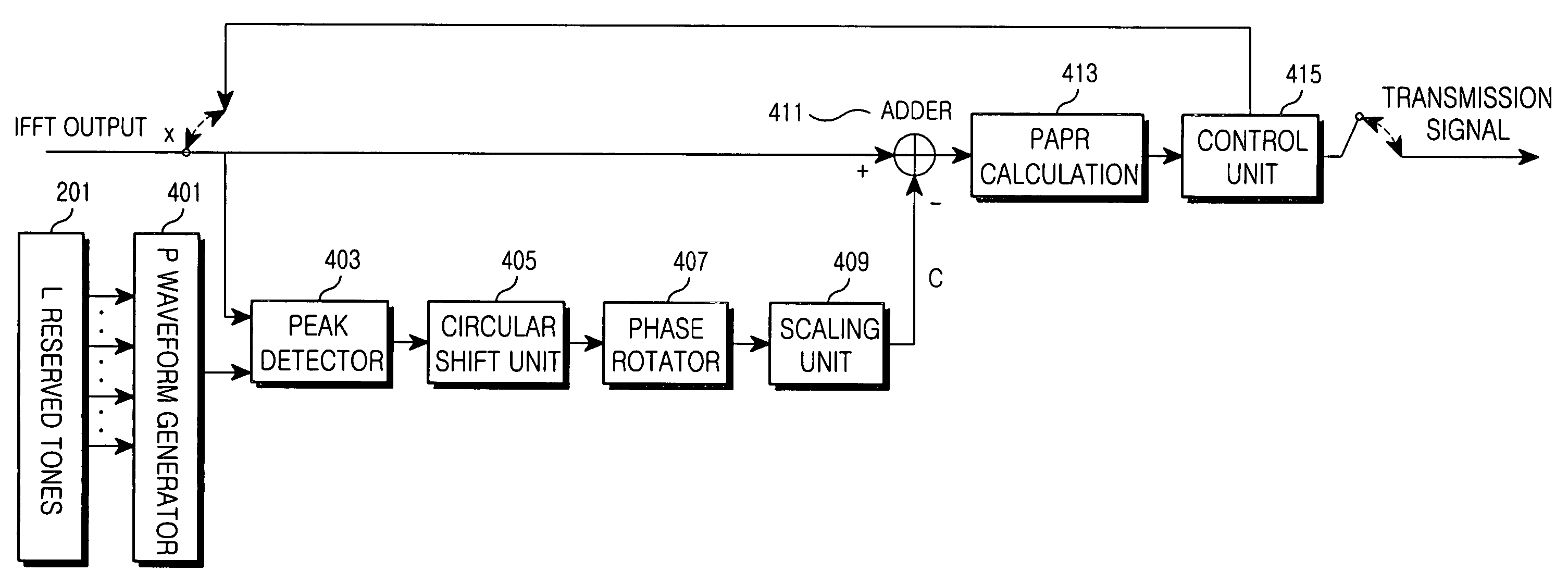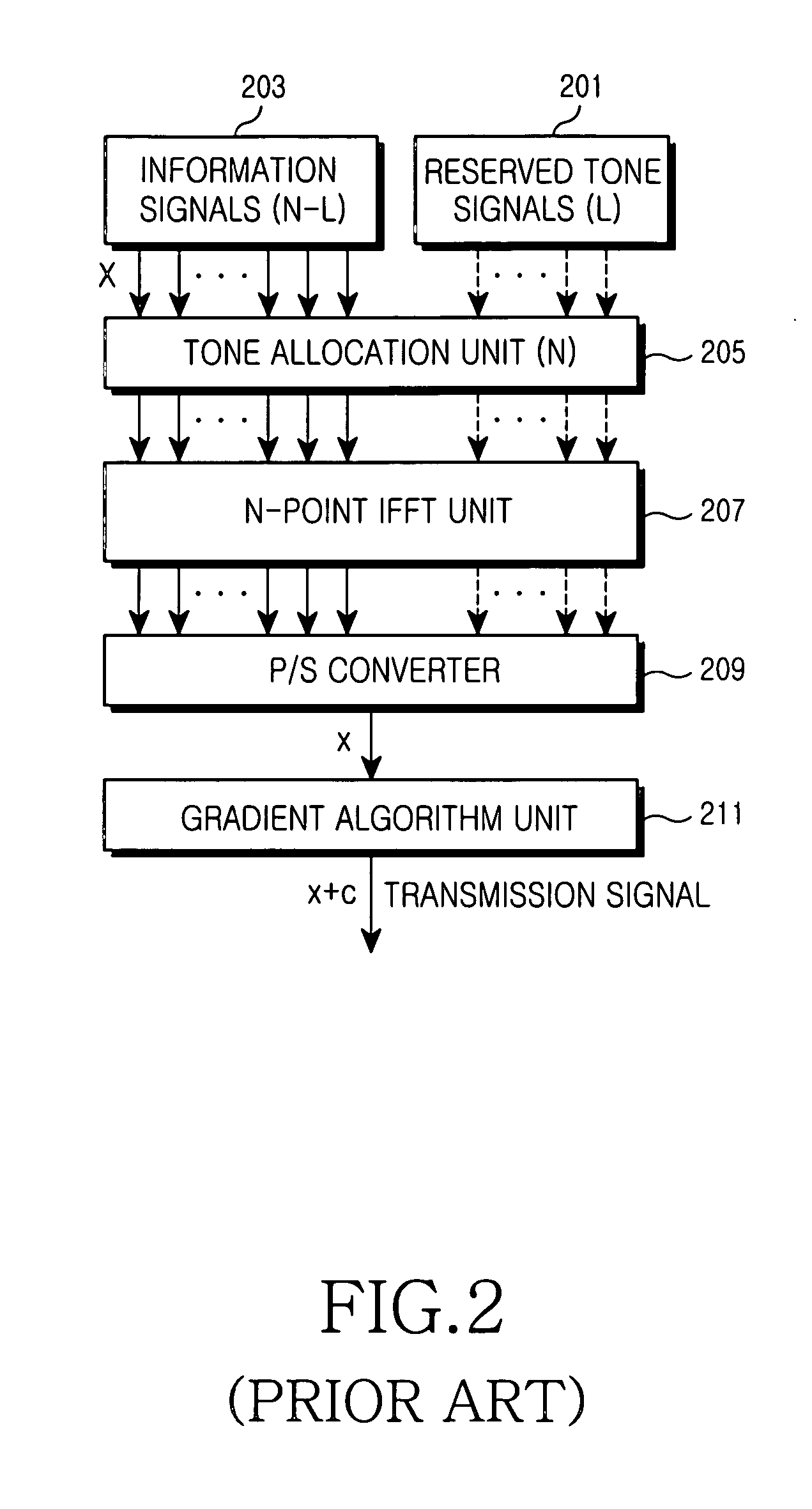Apparatus and method for reducing PAPR in OFDM communication system
a communication system and papr technology, applied in multiplex communication, orthogonal multiplex, baseband system details, etc., can solve the problems of high increase the probability of erroneous determination of the starting point of received ofdm symbols, and increase the probability of papr in the ofdm system, so as to reduce the peak-to-average power ratio
- Summary
- Abstract
- Description
- Claims
- Application Information
AI Technical Summary
Benefits of technology
Problems solved by technology
Method used
Image
Examples
Embodiment Construction
[0062] Hereinafter, preferred embodiments of the present invention will be described with reference to the accompanying drawings. In the following description, a detailed description of known functions and configurations incorporated herein will be omitted when it may make the subject matter of the present invention unclear.
[0063] The present invention embodies an apparatus and a method for reduction of a PAPR in a mobile communication system employing an OFDM scheme. In particular, the present invention sets forth an apparatus and a method using a complex gradient algorithm, thereby reducing a PAPR while increasing a transmission rate.
[0064] First, a reason for generating the p waveform and a method of reducing the PAPR using the p waveform will be described.
[0065] When xclip represents a vector for x having been clipped to a certain level, the vector satisfies a relation, x-xclip=∑i βiδ[n-mi].
In the relation, i denotes the number of repetitions, β refers to a clipping va...
PUM
 Login to View More
Login to View More Abstract
Description
Claims
Application Information
 Login to View More
Login to View More - R&D
- Intellectual Property
- Life Sciences
- Materials
- Tech Scout
- Unparalleled Data Quality
- Higher Quality Content
- 60% Fewer Hallucinations
Browse by: Latest US Patents, China's latest patents, Technical Efficacy Thesaurus, Application Domain, Technology Topic, Popular Technical Reports.
© 2025 PatSnap. All rights reserved.Legal|Privacy policy|Modern Slavery Act Transparency Statement|Sitemap|About US| Contact US: help@patsnap.com



